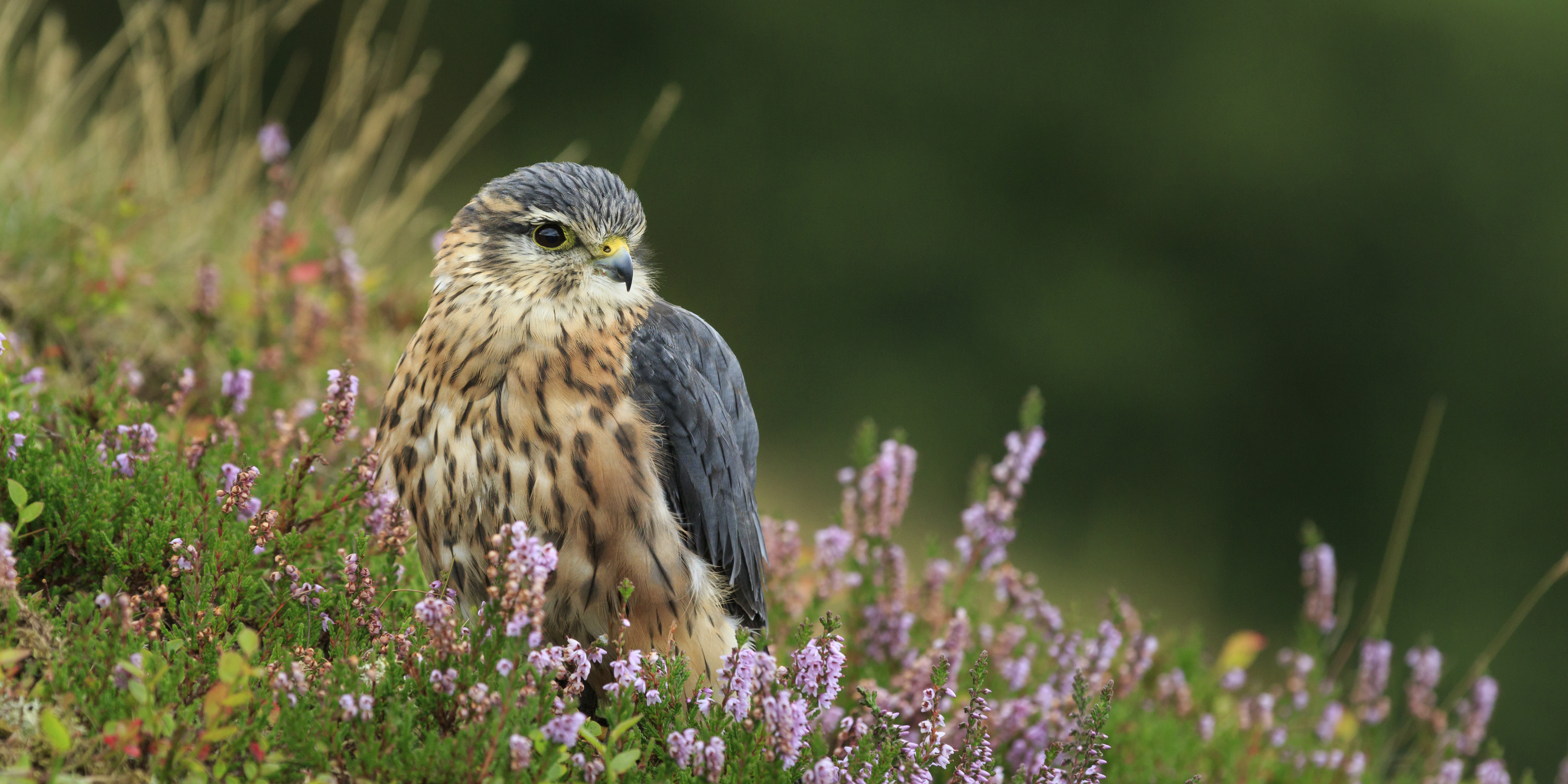As our coastal mudflats and estuaries fill up with large flocks of wading birds moving in from their northern breeding grounds, they will need to maintain constant vigilance for a diminutive falcon that could swoop in amongst their ranks at any time in a daring smash and grab raid.
Size doesn’t matter for the dashing merlin because its small body packs a fearsome punch, favouring a fast low level attack that will send a feeding flock of dunlins into a panicked scatter. The wee falcon picks out its fleeing victim from the mass of wheeling waders and tenaciously stays on its tail, weaving this way and that, before plucking it out of the air with its sharp yellow talons.
Little wonder that such speed and agility has led falconers to dub the merlin the “pocket rocket”. In the Middle Ages the merlin was also known by falconers as the “ladies’ hawk” in deference to it being smaller and lighter on the wrist than other falcons, the attractive plumage no doubt making it a rather trendy fashion accessory.
Despite being not much bigger than a mistle thrush, the merlin is such a gutsy bird. I remember once in Shetland being dive-bombed by a determined female after having strayed inadvertently near her nest. I also recall a tale of an instance on the Ythan estuary in north-east Scotland when a merlin was so engrossed in its aerial chase of a small wader that the flighty falcon flew straight inside a parked car that had its door open!
Another pair I got to know well in Glen Dye between Fettercairn and Banchory would intercept any large bird that ventured onto their territory, including gulls, crows and once even a hen harrier, mobbing the avian intruder with relentless ferocity until it had been driven away.
The very mention of Glen Dye makes my eyes well-up, for this wonderful area of hill and moor was at one time like a spiritual home to me. For many years I regularly tramped its open expanses and in the process chalked up some of my most memorable wildlife experiences.
From golden eagles and peregrines through to watching ‘roding’ woodcocks skimming above the treetops on spring evenings, this was a place that had it all. I once saw over 50 white-coated mountain hares crouching in the lee of Meluncart hill, sheltering from the piercing wind. Another time I trekked hard through the glen to eventually reach the summit of Mount Battock overlooking Glen Esk. It was here that Scotland’s most easterly ptarmigans could be found.
Although I still frequently pass by Glen Dye whenever driving along the Cairn o’ Mount road, I haven’t properly walked the area for over 20 years. Such are the abiding memories, I am in some ways reluctant to return just in case the glen is not how I remember it.
Info: In autumn and winter look out for merlins at the Montrose Basin. Young birds and adult breeders from the Angus glens often winter here, attracted by the numerous waders.










